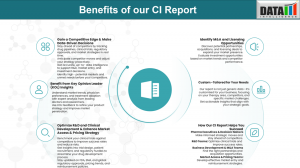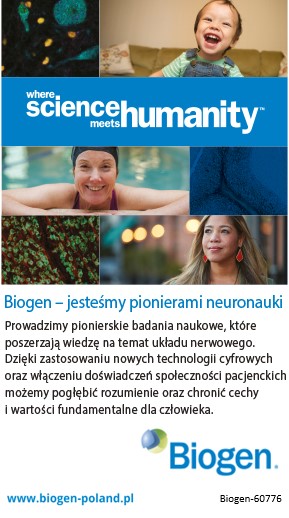Waldenstrom Macroglobulinemia: Innovation Heats Up as Next-Gen Therapies Challenge the BTK Standard | CI Insights
Waldenstrom Macroglobulinemia sees growing innovation as next-gen BTK inhibitors and novel therapies aim to overcome resistance and reshape treatment pathways.
Waldenstrom Macroglobulinemia (WM), a rare and indolent type of non-Hodgkin lymphoma, is undergoing a seismic shift in its therapeutic landscape. For years, Bruton tyrosine kinase (BTK) inhibitors-particularly ibrutinib-have dominated the treatment algorithm. However, the limitations of current therapies, including safety concerns and acquired resistance, are opening the door for next-generation BTK inhibitors and entirely new classes of drugs. As this evolving market takes shape, emerging players are vying to redefine the treatment paradigm and address long-standing unmet needs.
Download CI Sample Report: https://www.datamintelligence.com/strategic-insights/ci/waldenstrom-macroglobulinemia-wm
Disease Overview: A Rare B-cell Lymphoplasmacytic Cancer
WM arises from abnormal B cells that produce excess immunoglobulin M (IgM) antibodies. The disease can lead to hyperviscosity of the blood, fatigue, neuropathy, and visual disturbances. Diagnosis typically involves serum IgM testing, bone marrow biopsy, and genetic analysis—often identifying MYD88 and CXCR4 mutations, which influence therapeutic response and prognosis.
Though slow-growing, WM is incurable and requires lifelong management. Standard treatment aims to control symptoms, prolong progression-free survival, and improve quality of life.
Epidemiology: A Niche but Consistent Global Burden
Waldenstrom Macroglobulinemia is exceptionally rare, affecting approximately 3 to 5 people per million annually. The disease predominantly affects older adults, with the median age at diagnosis around 70 years. Men are more commonly affected than women, and individuals of European ancestry represent the majority of diagnosed cases.
While accounting for only 1–2% of all non-Hodgkin lymphomas, WM represents a significant medical challenge due to its chronic nature, impact on quality of life, and resistance development to current therapies.
Approved Therapies: BTK Inhibitors Set the Standard
BTK inhibitors have transformed the WM landscape, offering targeted therapy that disrupts B-cell receptor signaling. The approved therapies include:
- Ibrutinib (AbbVie / Janssen): The first-in-class covalent BTK inhibitor, widely approved and used. While effective, it has notable off-target effects, including atrial fibrillation, bleeding, and hypertension.
- Zanubrutinib (Beigene): A second-generation BTK inhibitor with improved selectivity. It offers better safety and is increasingly favored in frontline settings due to reduced adverse effects.
- Tirabrutinib (Ono Pharmaceutical): Approved in Japan and other regions, this BTK inhibitor features CNS penetration and high selectivity, making it suitable for central nervous system involvement.
These agents have achieved substantial success, yet challenges remain—particularly in terms of resistance mutations (e.g., C481S), chronic toxicities, and treatment intolerance.
Pipeline Innovation: Resistance-Fighting and Mechanistic Diversity
The WM pipeline is diversifying rapidly, driven by the need to overcome resistance and broaden treatment options. Key developments include:
1. Non-Covalent BTK Inhibitors
- Pirtobrutinib (Eli Lilly): Designed to bind reversibly to BTK, this next-generation inhibitor retains efficacy in patients with C481S mutations that render ibrutinib ineffective.
- Nemtabrutinib (Merck): Another covalent BTK inhibitor in Phase II, tailored for resistant cases, with potentially enhanced safety.
2. BTK Degraders
- BGB-16673 (Beigene): A first-in-class BTK degrader aiming to eliminate the BTK protein entirely. This novel mechanism may bypass resistance seen with inhibitors.
3. Novel Modalities
- Iopofosine I-131 (Cellectar Biosciences): A targeted radiotherapeutic delivering radioactive iodine to CD20-expressing cancer cells. Positioned for relapsed/refractory cases.
- Loncastuximab Tesirine (ADC Therapeutics): A CD19-directed antibody-drug conjugate (ADC) offering targeted chemotherapy delivery with promising early results.
4. BCL-2 and JAK Pathway Inhibitors
- Sonrotoclax (Beigene): A BCL-2 inhibitor that promotes apoptosis in cancerous B cells. It may be used synergistically with BTK inhibitors.
- Pacritinib (Sobi): A JAK2/FLT3 inhibitor with a distinct pathway targeting inflammation and proliferation, offering a non-overlapping mechanism.
Competitive Landscape: Strategic Segmentation and Differentiation
With multiple players crowding the BTK space, the future of WM therapy depends on meaningful clinical differentiation. The key strategies companies are leveraging include:
- Safety Optimization: Next-gen agents like zanubrutinib and pirtobrutinib offer better tolerability, making them suitable for long-term use.
- Mechanism Diversification: Non-BTK modalities provide options for patients who are resistant or intolerant to BTK inhibitors.
- Mutation-Driven Targeting: Drugs tailored for MYD88 wild-type or CXCR4-mutant patients are under investigation for more personalized approaches.
- Geographic Strategy: Tirabrutinib and orelabrutinib are focused on Asia-Pacific markets, particularly China and Japan, while others aim for global reach.
Book Free CI Consultation Call: https://www.datamintelligence.com/strategic-insights/ci/waldenstrom-macroglobulinemia-wm
Target Opportunity Profile (TOP): What Emerging Drugs Must Deliver
For emerging therapies to secure commercial success and therapeutic relevance, they must outperform or complement existing standards across several dimensions:
- Safety: Current therapies like ibrutinib are associated with significant side effects. New agents should offer a cleaner safety profile with reduced bleeding, atrial fibrillation, and hypertension.
- Efficacy: High response rates are already achievable, but there’s a strong need for drugs active against BTK-resistant mutations and those that offer longer-lasting remissions.
- Mechanism of Action (MoA): Beyond irreversible BTK inhibition, future therapies should target alternative pathways such as apoptosis (BCL-2), protein degradation (BTK degraders), or immune evasion (radiopharmaceuticals, ADCs).
- Route of Administration: Oral remains the preferred option. However, subcutaneous or intravenous routes can be acceptable if accompanied by strong efficacy or tolerability advantages.
- Dosing Convenience: Simplified regimens, such as once-daily dosing or infrequent infusions, are attractive in chronic diseases to support long-term adherence.
- Innovation & Modality: Novel drug classes like degraders, radiotherapies, and bispecific antibodies should provide unique value, particularly for refractory and relapsed patients.
- Pharmacokinetics: Agents with minimal drug-drug interactions and steady BTK engagement are ideal, especially in older, comorbid populations.
- Regulatory Strategy: Given the rarity of WM, orphan designation and priority review can be strategic accelerators. Strong biomarker-guided trial designs may further support fast-track approvals.
Conclusion: A Market Poised for Rebirth
Waldenstrom Macroglobulinemia is at a crossroads. The era of BTK dominance has undeniably advanced care, but resistance, intolerance, and limited treatment diversity are driving innovation forward. The next few years will be defined by therapies that combine high efficacy with precision, better tolerability, and new mechanisms.
Read Related CI Report:
1. Focal Segmental Glomerulosclerosis | Competitive Intelligence
2. Chronic Alopecia Areata | Competitive Intelligence
Sai Kumar
DataM Intelligence 4market Research LLP
+1 877-441-4866
sai.k@datamintelligence.com
Visit us on social media:
LinkedIn
X
Legal Disclaimer:
EIN Presswire provides this news content "as is" without warranty of any kind. We do not accept any responsibility or liability for the accuracy, content, images, videos, licenses, completeness, legality, or reliability of the information contained in this article. If you have any complaints or copyright issues related to this article, kindly contact the author above.
SF Holding Launched H-share Equity Issuance and Concurrent Zero Coupon Convertible Bonds Offering
LA ORIGINAL BANDA EL LIMÓN CELEBRA 60 AÑOS CON EL LANZAMIENTO DEL ÁLBUM HISTORIA Y TRADICIÓN VOLUMEN 1
'SMASH FOR CASH' TEES OFF AT 2025 AMERICAN CENTURY CHAMPIONSHIP — WHERE EVERY SWING DRIVES DONATIONS
Kalendarium
Więcej ważnych informacji
 Jedynka Newserii
Jedynka Newserii

 Jedynka Newserii
Jedynka Newserii

Ochrona środowiska

Polskie przedsiębiorstwa otwarte na transformację w kierunku gospodarki obiegu zamkniętego. Nowa mapa drogowa mogłaby w tym pomóc
Do 2030 roku z gospodarki o obiegu zamkniętym ma pochodzić co czwarty surowiec. Aby przyspieszyć ten proces, w Polsce potrzeba nowej, międzysektorowej Mapy Drogowej dla Gospodarki o Obiegu Zamkniętym – wskazywali eksperci w trakcie Polish Circular Forum. Obecny dokument nie spełnia już swojej roli i wymaga aktualizacji. Na braku jasnych przepisów i systemu wsparcia najbardziej cierpią przede wszystkim małe i średnie przedsiębiorstwa. – Z naszych badań wynika, że tylko 3–3,5 proc. firm z sektora MŚP jest świadomych i przygotowanych do transformacji – ocenia Agnieszka Zdanowicz, wiceprezes Klastra Gospodarki Cyrkularnej i Recyklingu.
Prawo
Wspólna polityka rolna do deregulacji. Trwają prace nad uproszczeniami dla rolników

Prawie 1,6 mld euro – tyle mają wynieść roczne oszczędności dla rolników po uproszczeniu wspólnej polityki rolnej. Zaproponowany w maju przez Komisję Europejską pakiet zmian zakłada redukcję części obowiązków administracyjnych, które dziś spoczywają na rolnikach ubiegających się o unijne wsparcie. Szczególnie dotyczy to płatności dla drobnych rolników. Jak podkreślają eksperci, wszelkie zmiany, które będą działać na rzecz konkurencyjności unijnego rolnictwa, są wskazane, ale przy uwzględnieniu wysokiego poziomu bezpieczeństwa żywności.
Polityka
W rosyjskiej niewoli może przebywać kilkadziesiąt tysięcy Ukraińców. Napięta sytuacja geopolityczna sprzyja Rosji

W rosyjskiej niewoli przebywa około 10 tys. obywateli Ukrainy, z czego ponad 8 tys. to żołnierze. Łącznie jednak może ich być nawet kilkukrotnie więcej. ONZ podaje, że ponad 95 proc. ukraińskich jeńców wojennych jest poddawanych torturom. – Pogarszająca się sytuacja międzynarodowego bezpieczeństwa i wzrost wpływów do budżetu Federacji Rosyjskiej ze względu na wzrost cen ropy mogą się negatywnie odbić na planowanych wymianach jeńców – ocenia Michał Dworczyk, wiceprzewodniczący Komisji Bezpieczeństwa i Obrony w Parlamencie Europejskim.
Partner serwisu
Szkolenia

Akademia Newserii
Akademia Newserii to projekt, w ramach którego najlepsi polscy dziennikarze biznesowi, giełdowi oraz lifestylowi, a także szkoleniowcy z wieloletnim doświadczeniem dzielą się swoją wiedzą nt. pracy z mediami.









.gif)

 |
| |
| |
|